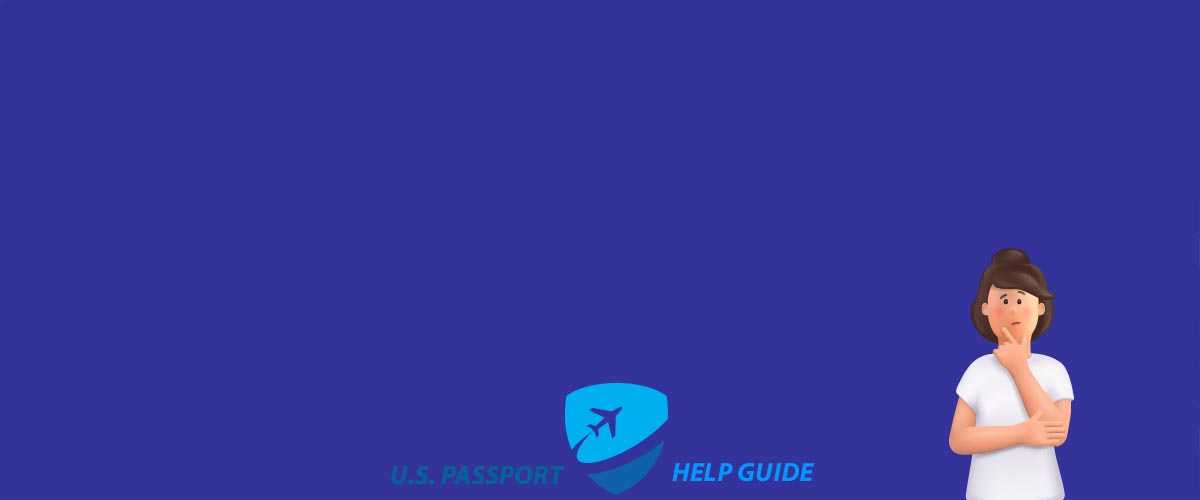 Question: What is the Visa Waiver Program?
Question: What is the Visa Waiver Program?
Answer: This program was spearheaded by United States Department of State. It is an initiative that enables citizens or nationals of certain countries to enter the U.S. without a visa. Hence, this program applies to individuals who will travel into the United States for 90 days or less. Also, this program is for anyone from the following countries who are coming for the purposes of either tourism or business. Currently there are over 30 countries who participate in this program. Here is a list of just a few of these countries:
- Australia
- Austria
- Czech Republic
- France
- Germany
- Italy
- Japan
- South Korea
- Spain
- Sweden and more
The Visa Waiver Program Requirements
The first major requirement of the Visa Waiver Program is all applicants must have a valid ESTA. The ESTA or Electronic System for Travel Authorization must be approve PRIOR to the date the trip begins. All applicant obtain authorization from the Department of State via the website.
Additionally, there are a number of other important requirements that a traveler must meet to be in the Visa Waiver Program. One of the important requirements is the purpose of the trip be permitted on a Visitor (B) Visa. If your trip is for the purposes of business, examples below will constitute reasons for a Visitor (B) Visa:
- Coming to the United States specifically to consult with one or more business associates.
- Attending a business convention or conference, or some other type of scientific, educational, or otherwise professional event.
- Coming to the United States in order to negotiate a contract or other business deal.
If your trip is for the purpose of tourism, examples below will demonstrate the reason for a Visitor (B) Visa:
- A vacation.
- Medical treatment.
- Visit with friends or relatives.
- Enroll in a short, recreational course for the purpose of study.
It is important to note that studying for credit, visiting the U.S. for the purposes of employment, and similar travel reasons are not allow under the program.

Firstly, it is important to note that the rules and regulations of transferring from a student visa to a work visa will differ depending on the country you are in. However, in most countries, with certain conditions, transferring from a student visa to a work visa is possible. In the United States, for example, students with F-1 visas are eligible to apply for opt employment, which allows them to obtain a one-year employment authorization. After that, they can apply for the H-1B visa, which allows them to work in the US for up to six years.
United Kingdom
In the United Kingdom, students on a Tier 4 visa can switch to a Tier 2 general work visa if they meet certain conditions. They must have a job offer from a UK employer that is willing to sponsor their visa and pay the necessary fees, and the job must meet current skill and salary requirements. It is important to note that the Tier 2 visa has strict regulations regarding minimum salary and job requirements, and therefore not all job positions will qualify.
France
In France, students with a student visa can apply for a temporary work permit (APT), which allows them to work for up to one year following the completion of their studies. The APT can be renewed for a second year, and after that, candidates can apply for a standard work visa if they meet the conditions.
Australia
In Australia, international students can apply for a post-study work visa after they have completed their studies. The length and eligibility of the visa depend on the level of qualification achieved. For example, graduates with a Bachelor’s or Master’s degree can apply for a two-year post-study work visa, while those with a Ph.D. can apply for a four-year post-study work visa.

For those who have found love with someone from a different country, the process of bringing them into the United States can be complicated. One option available for couples planning to get married is the K-1 visa, which allows a foreign fiancé(e) to enter the U.S. temporarily. In this blog post, we will cover everything you need to know about the K-1 visa.
What is a K-1 Visa?
A K-1 visa, also known as a fiancé visa, allows a foreign fiancé(e) to enter the United States temporarily to marry a U.S. citizen within 90 days. Once the marriage takes place, the foreign spouse may then apply for permanent residence through the adjustment of status process.
Basic Requirements for a K-1 Visa
- The petitioner (the U.S. citizen) must file a petition for the foreign fiancé(e).
- The couple must have met in person within the past two years.
- The foreign fiancé(e) must be legally free to marry and the marriage must be valid.
- The foreign fiancé(e) must not have any criminal background or be inadmissible under U.S. law.
- The couple should demonstrate a legitimate relationship and intention to marry.
How to Apply for a K-1 Visa?
The K-1 visa application process involves several steps, including submitting a petition to U.S. Citizenship and Immigration Services (USCIS), attending a visa interview, and undergoing medical and criminal background checks. After USCIS approves the petition, the U.S. Embassy or Consulate in the foreign fiancé(e)s’ country will schedule a visa interview. The fiancé(e) will typically need to attend this interview to obtain the visa.
How Long Does It Take to Get a K-1 Visa?
The timeline to obtain a K-1 visa can vary based on a variety of factors, such as the country from which your fiancé(e) is applying, how long it takes to complete the medical exam and background checks, and how long it takes to schedule the interview. On average, the process takes around 9-12 months from start to finish.
Conclusion
In conclusion, if you plan to get married to someone from another country, the K-1 visa may be an option to bring your fiancé(e) to the United States. The process can be lengthy, but it can ultimately lead to permanent residence for your loved one. Make sure to follow all the requirements and guidelines throughout the application process to avoid any delays or complications.
 Question: What are the benefits of using the SEVIS system? I would like to use the SEVIS system but want more information about it first.
Question: What are the benefits of using the SEVIS system? I would like to use the SEVIS system but want more information about it first.
Answer: The SEVIS is a component of the Student and Exchange Visitor Program or SEVP. The SEVP system is part of the National Security Investigations Division. It serves as a link for the government organizations that have a concern regarding non-immigrants. Especially, non-immigrants who enters the U.S. for the main reason of becoming a student.
Being a part of the Department of Homeland Security, SEVP will work with schools that have students under this status. Any non-immigrant students will have a M and F visa class along with their dependents. The Department of State will be the department that deals with everyone in the Exchange Visitor Programs. In addition, all the non-immigrant exchange visitors who have a J visa and their dependents will meet with the Department of State.
Both of these agencies, D.H.S. and D.S., use the SEVIS system to keep order and monitor schools. Schools that participate with the exchange visitor programs. Also, students who have a J, F, and M non-immigrant visa attending schools.

A Burroughs Travel Visa is a professional travel document that grants entry into countries for business or work-related purposes. It is a legal document that allows individuals to conduct transactions and attend professional meetings while abroad. Applying for a Burroughs Travel Visa requires thorough documentation of the traveler’s current profession and purpose of their travel.
This type of visa is recognized internationally and is granted following the legal regulations and procedures of the host country. It is important to ensure that all information provided is accurate and up-to-date to avoid any delays or complications in the application process. Overall, a Burroughs Travel Visa is a necessary tool for professionals looking to expand their business or work opportunities abroad.
 Question: Is there any way to qualify for the visa waiver program? Also, are there guidelines that need to be met before I can qualify for the program?
Question: Is there any way to qualify for the visa waiver program? Also, are there guidelines that need to be met before I can qualify for the program?
Answer: The visa waiver program will allow citizens of participating countries to travel to the United States. Individuals coming will not need to obtain a visa for 3 months or less, if all conditions have been met. However, the applicants who meet the eligibility conditions for the Visa Waiver Program can come as a tourist or for business. In addition, all applicants must posses a valid Electronic System for Travel Authorization (ESTA) approval prior to their travel.
A Visa Waiver Program applicant may fall under one of these criteria:
For Business
- an individual is here to meet with business associates
- attend conferences or conventions associated with education, business, or professional
- attend a short term training
For tourism
- vacation
- visiting friends or relatives
- medical treatment
- sporting events at the amateur level
So, individuals can apply for a visa if he/she fits any of the criteria above. In some other cases, applying for a regular visa may be more beneficial. Furthermore, a regular visa will have less restricts as to the waiver program. So, the best thing would be to evaluate your purpose of coming to the U.S. and determine which visa will benefit you more.
 Question: I have been denied my visa under section 214B and I would like to know if this would be permanent?
Question: I have been denied my visa under section 214B and I would like to know if this would be permanent?
Answer: Within Section 214B it states “Every alien shall be presume to be an immigrant until he establishes to the satisfaction of the consular officer. At the time of application for admission, that he is entitled to a non-immigrant status.”
The rejection under section 214B will not be permanent. The consular office will consider the previous case when the applicant reapplies. The consular office will reconsider the case if the applicant can provide proof that convinces the office enough that the applicant has strong ties outside the United States. However, some applicants will not be able to obtain a non-immigrant visa no matter how many times they apply. The individual must change his/her circumstances by dealing with personal, professional, and financial aspects significantly.
To aid this matter, you can submit a specific letter. This letter is a letter of invitation or support. This will not completely guarantee that you will get a visa. All visa applicants will have to apply for their visa with thought of their own circumstances. This means that applicants cannot use relatives or friends in the United States as aids to their circumstances. The applicant will have to provide his/her own circumstances for evaluation. Then, it will be determine if he/she will get a visa or not.
 Question: As an applicant, I was asked to provide ‘strong ties’ and I am not too sure what this means. What is considered a strong tie?
Question: As an applicant, I was asked to provide ‘strong ties’ and I am not too sure what this means. What is considered a strong tie?
Answer: The terminology “strong ties” pertains to whether or not the traveler has something strong enough for them to go back to in their original country.
See below for and example of what is consider to be a strong ties. But, beware that this is just an example and other things might be consider “strong ties”.
The Following is Consider a Strong Ties on Visa Application
- If you are currently engage,or have a boyfriend/girlfriend, then you will need to submit a photograph to show you are not going to marry in the United States.
- If you are a student, then you will need to show your school identification or college identification card.
- If you are currently employ, then provide your employment letter, pay stub, income tax returns, and bank statements to show stability within your job. Also, you can speak about how you will further that job. Finally, you will need a short-term leave sanction letter.
- We advise you to make a family tree to show your parents, uncles/aunts, siblings, and any other close relative of yours. For each you should describe where they live, what they do, and their financial condition.
- Evidence of family by showing photos from within the house that you live in. This will show the bonds you have with close family members that you currently live with.
- Finally, documents from your parents such as income tax returns, bank statements, copies of passports, etc.
 Question: I forget to hand in my I 94 form when I left the United States: What should I do?
Question: I forget to hand in my I 94 form when I left the United States: What should I do?
Answer: If you have exited the United States by commercial air or by sea carrier, such as a cruise ship, then you will not need to take additional action in regards to your I 94. This is because your departure out of the United States can be independently verified. If you keep your existing boarding pass, it can help to ease your entry when you return.
Next, if you exit the U.S. by land, air, or water, then you will need to take additional action to correct the record. This is because your exit from the U.S. is not verified.
If your exit was not verify and you cannot prove a timely exit, the next time coming into the U.S. will be difficult. Customs and Border Protection will assume you were in the U.S. the entire time beyond your allowable stay. If this happens, terminating your visa will be the first option. Next, you must return to your original destination.
Under the Visa Waiver Program, visitors who stay longer than usual in the U. S. must apply for a visa when trying to re-enter the U.S. again.
 Question: What is the Visa Waiver Program?
Question: What is the Visa Waiver Program?

 Question: What are the benefits of using the SEVIS system? I would like to use the SEVIS system but want more information about it first.
Question: What are the benefits of using the SEVIS system? I would like to use the SEVIS system but want more information about it first.